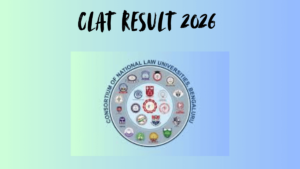Pollution Essay
In today’s society, pollution has emerged as a major yet widely prevalent problem. It has existed for a very long time, even before the advent of humans, in many forms including volcanic eruptions and wildfires that cause a variety of photochemical reactions in the atmosphere. The present worry is that it is becoming worse every day as a result of numerous sources of pollution. Humans and machine-made objects are also a major source of pollution. It is true that pollution causes serious harm to the environment, and as humans, it is our responsibility to do all we can to stop it.
Pollution Essay in English
Almost every class has essay writing in its curriculum, and the pollution essay is a hot topic among other essay topics. All students need to know about pollution and how it adversely affects the environment and life on earth. Students should be aware of treatments for pollution so that they can take action to reduce it. Today’s youngest environmental activist is Greta Thunberg from Stockholm, Sweden. She proved that she can save Mother Earth even when she is young. There is no age limit to take on this great responsibility. Students should be aware of environmental pollution and its reduction techniques. In this article, we have discussed contamination essays. Students should read the entire page and read every word on that page to fully understand all the topics covered in the Tainted Essay.
Read: Global Warming Essay
Essay on Pollution
What is Pollution?
The intrusion of pollutants into the global environment is called pollution. The contaminant is the designation of these contaminants. Pollutants can come from both humans and nature, such as garbage and volcanic ash. Pollution comes in many forms, including air pollution, water pollution, and noise pollution. Pollution is increasing day by day as pollution levels rise and people suffer serious illnesses. Therefore, everyone should be aware of pollution and its effects and how to successfully reduce it. Just like a balanced diet for a healthy body, our environment requires a balanced mixture of all substances. Any substance above that threshold pollutes the environment. B. Increased atmospheric carbon dioxide and nitrogen oxides. It pollutes the air and harms human health.
Read: My Family Essay
Types of Pollution: Air, Water, Noise, and Soil
Different types of pollution have different effects on different parts of the environment. The pollution types include Air pollution, Water pollution, Noise pollution, and Soil pollution. Let us discuss these types of pollution in detail.
Air Pollution
Air pollution happens when dangerous or excessive amounts of pollutants, such as smoke and hazardous gases from industry, CFCs and oxides produced by cars, the burning of solid wastes, etc., are released into the environment. A nice and realistic example of air pollution is the pollution caused by firecrackers following Diwali. Another example of air pollution is the smoke produced by moving cars.
Noise Pollution
The lighting of fireworks, running of industries, and the playing of music over loudspeakers—especially during festival season—all contribute to noise pollution. If it isn’t controlled, it may also have an impact on how the brain functions. Due to the high volume of vehicles on the road, noise pollution is also increasing. This is concerning for people who live in cities or close to highways because it leads to stress-related problems like anxiety.
Water Pollution
Water pollution is a significant problem for humans right now. Pollutants are dumped directly into bodies of water like canals, rivers, and seas, including sewage waste, pesticides, home, and agricultural trash, industrial or factory waste, and other wastes. As a result, the habitat of marine life has been destroyed, and the amount of dissolved oxygen in water bodies has started to decrease. The availability of drinkable water is significantly impacted by water contamination. People are compelled to consume tainted water, which might result in serious illnesses.

Soil Pollution
A sizable fraction of the Indian population works in agriculture. As part of farming, farmers use a range of fertilizers, herbicides, fungicides, and other chemical substances. This further contaminates the soil, making it unsuitable for growing crops. In addition, soil pollution happens when authorities dump household or commercial trash on the ground. As a result, mosquito reproduction is encouraged, which promotes the spread of diseases like dengue and malaria.
Effects of Different types of Pollution
Effects of Soil Pollution
Soil is the foundation of the earth on which we walk, travel, grow vegetables and grains, and nourish us. Chemical farming degrades soil quality, and many hazardous substances come into contact with our bodies and cause various skin diseases, which are unavoidable in the form of food crops grown on such contaminated soil. Mm. Below are some of the most common illnesses caused by soil contamination.
leukemia
liver and kidney failure
loss of fertility
Effects of Noise Pollution
Construction, loudspeakers, and other man-made noises, as well as natural disturbances like thunderstorms and animal noises, all contribute to noise pollution. Some of the most prevalent ailments brought on by noise pollution include the following:
Headaches
The issue with reasoning and changing behavior
elevated blood pressure
hearing loss
Effects of Water Pollution
Sewage waste, pesticides, household and agricultural waste, industrial or factory trash, and other pollutants that are dumped directly into water bodies including canals, rivers, and seas are the main causes of water pollution. Some of the most prevalent illnesses brought on by water contamination include the following:
Typhoid, polio, hepatitis A, dysentery, diarrhea, and cholera
Pollution’s Effects on living beings
All types of pollution, whether air, water, soil, or noise has an adverse effect on living beings. Organisms are plagued with deadly diseases caused by pollution of water, air, noise, or soil.
• Several fatal diseases are caused by air pollution such as Ischemic heart disease, stroke, lung cancer, chronic obstructive pulmonary disease (COPD), and acute lower respiratory infections in children among the most prevalent illnesses brought on by air pollution. Several illnesses like strokes, asthma, bronchitis, heart attacks, lung diseases, cancer, and early mortality from heart conditions are brought on by air pollution in India. Global warming is the most burning problem in the whole world that is caused by air pollution.
• Poor drinking water quality contributes to the development of more than 50 different diseases, and it is the cause of 80% of illnesses and 50% of child deaths worldwide. Water contamination, however, results in diarrhea, skin conditions, malnutrition, even cancer, and other problems connected to water pollution.
• Every day, millions of People are impacted by noise pollution. Most commonly, this leads to noise-induced hearing loss (NIHL). Stress, high blood pressure, heart disease, and sleep disturbances can all be triggered by loud noises. All age groups, especially children, are susceptible to these health problems. Noise pollution is very dangerous even deadlier for patients with heart problems.
Not only human beings, pollution badly impacts animals, birds as well as marine environments. Through organ damage, increased susceptibility to stress and disease decreased reproductive success, and even death, air pollution can poison wildlife. Many marine creatures become extinct as a result of water pollution.
Methods to Reduce Pollution
As responsible citizens, we must take some measures to reduce the pollution in the environment for the future. Here, we’ve included a few strategies for lowering pollution.
- More trees should be planted.
- Food should be consumed in biodegradable containers.
- Avoid disposing of industrial trash in waterways such as rivers, seas, and oceans.
- Regulation of air through chimneys
- Use of electric vehicles or cycles
- Reduce the use of detergents
- Filter the wastewater before discharging it from the industry.
- Use of modern Chimneys so that harmful particles are not come out into the environment with smoke.
- Reduce the use of single-use plastic.
- Utilization of renewable energy instead of fossil fuel energy.
- Follow the guidelines the government has set forth for reducing environmental pollution.
- Increase public knowledge of environmental pollution, its effects, and the steps being taken to combat it.
Essay on Pollution- Format
Before we write an essay on environmental pollution, we must keep in mind some key points. The key points of the essay format are the introduction, content, and conclusion.
Introduction- The essay introduction should outline a specific whole topic. It gives a general idea of the topic to the reader. A pollution essay can start with a simple definition or a thought-provoking sentence. This is the first thing your readers will see, so add real-world examples and impactful questions to keep them interested.
Main Content –This is the heart of the essay. This segment must consist of a description of different types of pollution ( Air, Noise, water, soil pollution), how pollution affects the atmosphere and the environment, human beings along with all living organisms. End of the segment, it must mention the protective measures to fight against Pollution.
Conclusion – This part concludes the essay. , about 50 words. Try to give a positive outlook on the topic you are discussing or conclude with a brief summary.
Below we provide some pollution essays for a better understanding of the format of the pollution essay.
Pollution Paragraph
One of the biggest issues the entire planet is currently dealing with. Impairing the purity of anything is called contamination. And pollution of the air, water, and land around us is called pollution. Pollution affects our health and harms us in many ways.
Air Pollution-Air pollution is caused by smoke from vehicles, chimneys in mills and factories, and cooking furnaces. The stench of rotting garbage on the streets, the stench of dead animals. Dirty surface runoff pollutes the air. Excessive use of carbon dioxide emissions is causing global warming, causing glaciers to melt and sea levels to rise. Breathing impure air can cause great harm to your lungs. Air pollution causes acid rain, which affects historic landmarks such as the Taj Mahal and many buildings. The only hope to escape the curse is to plant more trees to prevent air pollution.
Water Pollution-Water is polluted when dirty and toxic waste from factories and factories is dumped into rivers. The polluted sewage discharged from the factory mixes directly with the river water. Drinking this water is bad for your health and causes various diseases such as diarrhea and typhoid fever. Dirty water is the breeding ground for mosquitoes that cause many deadly diseases such as malaria and dengue fever.
Noise Pollution – The horns of trucks, buses, microphones, and loudspeakers cause noise pollution. Noise pollution affects hearing and adversely affects the heart. Noise pollution is a heart patient’s nightmare. Soil Contamination-Excessive use of single-use plastics, unrestricted use of pesticides in agriculture, and unrestricted deforestation cause changes in soil composition and soil contamination. Therefore, if we want to live a healthy life, we must pay close attention to pollution. We must regulate the use of plastics, fossil fuels, deforestation and the use of high-frequency horns and speakers. As responsible citizens, we must take action to minimize pollution for a better life and future.
Essay on Environmental Pollution
Introduction
Environmental pollution is a global crisis that threatens the well-being of the planet and all its inhabitants. It refers to the introduction of harmful contaminants into the natural environment, leading to adverse effects on ecosystems, human health, and the overall quality of life. This essay explores the various forms of environmental pollution, their causes, consequences, and potential solutions.
Types of Environmental Pollution
- Air Pollution: Air pollution involves the release of harmful substances into the Earth’s atmosphere. Common pollutants include particulate matter (PM), sulfur dioxide (SO2), nitrogen oxides (NOx), carbon monoxide (CO), and volatile organic compounds (VOCs). Sources of air pollution include industrial processes, transportation, and the burning of fossil fuels.
- Water Pollution: Water pollution occurs when pollutants contaminate bodies of water such as rivers, lakes, oceans, and groundwater. Pollutants include sewage, industrial effluents, pesticides, and plastic waste. This pollution threatens aquatic ecosystems and the availability of clean drinking water.
- Soil Pollution: Soil pollution arises from the deposition of hazardous substances like heavy metals, chemicals, and pesticides into the soil. It degrades soil fertility, harms crops, and can lead to toxic substances entering the food chain.
- Noise Pollution: Noise pollution is the excessive, disturbing noise in the environment, typically caused by urbanization, industrial activities, transportation, and recreational activities. Prolonged exposure to noise pollution can result in various health issues.
- Light Pollution: Light pollution is the excessive or misdirected artificial light produced by streetlights, buildings, and other sources. It disrupts natural light cycles, negatively impacting nocturnal animals and human circadian rhythms.
Causes of Environmental Pollution
- Industrialization: Rapid industrial growth has led to increased emissions of pollutants into the air and water. Factories, power plants, and manufacturing processes release various chemicals and emissions that contribute to pollution.
- Transportation: The combustion of fossil fuels in automobiles, ships, and airplanes is a major source of air pollution. Emissions from vehicles release harmful substances like carbon dioxide (CO2), NOx, and CO into the atmosphere.
- Agricultural Practices: Intensive farming practices involve the use of pesticides, fertilizers, and other chemicals that can lead to soil and water pollution. Runoff from farms can carry these pollutants into nearby water bodies.
- Improper Waste Disposal: Inadequate waste management, including improper disposal of hazardous waste and plastic litter, contributes to pollution in landfills, oceans, and waterways.
Consequences of Environmental Pollution
- Health Impacts: Air and water pollution can lead to respiratory diseases, cardiovascular problems, and various other health issues in humans. Chemical contamination of food due to soil pollution poses additional health risks.
- Biodiversity Loss: Pollution disrupts ecosystems, causing harm to plant and animal species. Many species are at risk of extinction due to habitat destruction and pollution-related stress.
- Climate Change: Greenhouse gas emissions, a form of air pollution, are a major driver of global climate change, leading to rising temperatures, extreme weather events, and sea-level rise.
- Economic Costs: Pollution-related health care costs, reduced agricultural yields, and damage to infrastructure result in significant economic burdens for societies.
- Aesthetic and Recreational Impact: Pollution diminishes the aesthetic appeal of natural environments and impairs recreational opportunities, affecting the quality of life for individuals and communities.
Solutions to Environmental Pollution
- Sustainable Practices: Transitioning to sustainable agriculture, renewable energy sources, and eco-friendly industrial processes can reduce pollution.
- Regulation and Enforcement: Governments must enact and enforce strict environmental regulations to limit emissions and pollutants from industries, transportation, and agriculture.
- Waste Reduction and Recycling: Promoting waste reduction, recycling, and proper disposal of hazardous materials can mitigate pollution.
- Public Awareness: Education and awareness campaigns can encourage individuals to adopt eco-friendly practices and make environmentally conscious choices.
- Technological Innovation: Developing and implementing clean technologies, such as electric vehicles and carbon capture, can significantly reduce pollution.
Conclusion
Environmental pollution is a grave concern that demands immediate attention and collective action. Addressing pollution requires a multifaceted approach, including regulatory measures, sustainable practices, and public involvement. The future of our planet and the well-being of future generations depend on our ability to combat environmental pollution effectively.
Article on Pollution
Introduction: In today’s world, pollution has become one of the most significant global concerns, affecting every aspect of the Earth’s environment and human health. Its sources are numerous and its impact widespread, making it a complex issue that demands immediate and effective action.
Types of Pollution:
Air Pollution: Caused by the release of harmful substances like industrial emissions, vehicle exhaust, and chemical vapors, air pollution leads to respiratory diseases and contributes to global warming.
Water Pollution: Industrial waste, sewage, and agricultural runoff contaminate water bodies, affecting marine life and making water unsafe for human consumption.
Soil Pollution: The use of pesticides and industrial activity contaminates the soil, affecting plant life and entering the food chain.
Noise Pollution: Excessive noise from traffic, industries, and urban development disrupts wildlife habitats and affects human health.
Effects of Pollution:
Health issues like asthma, heart disease, and even cancer can be traced back to pollution.
Ecosystems are disrupted, leading to the loss of biodiversity.
Economic impact includes healthcare costs and loss of productivity due to health issues.
Preventive Measures and Solutions:
Regulatory Measures: Implementation of stricter environmental regulations and policies by governments.
Technological Advancements: Development and adoption of clean and green technologies.
Public Awareness: Educating the public about the effects of pollution and ways to reduce it.
Individual Actions: Encouraging practices like recycling, using public transportation, and reducing energy consumption.
The battle against pollution is not just the responsibility of governments or organizations but of every individual. It requires a collective effort where each action, no matter how small, contributes to a larger positive impact. A sustainable future is possible if we act now to mitigate the effects of pollution on our planet.
Call to Action: It is crucial for everyone to become environmentally conscious and take steps to reduce pollution in their daily lives. By working together and making informed choices, we can create a cleaner, healthier world for future generations.
![Pollution Essay in English [1000 Words] -_0.1](https://www.adda247.com/jobs/wp-content/uploads/sites/2/2022/09/07185734/school.png)

![Pollution Essay in English [1000 Words] -_3.1](https://www.adda247.com/jobs/wp-content/uploads/sites/2/2023/02/14111645/Banner.jpg)



![Pollution Essay in English [1000 Words] -_8.1](https://www.adda247.com/jobs/wp-content/uploads/sites/2/2025/11/28152807/700x200.png)






 CLAT Result 2026 Out, Download Scorecard...
CLAT Result 2026 Out, Download Scorecard...
 CLAT Topper List 2026 Released with Rank...
CLAT Topper List 2026 Released with Rank...
 When Will NEET 2026 Registration Start? ...
When Will NEET 2026 Registration Start? ...
![Pollution Essay in English [1000 Words] -_9.1](https://www.adda247.com/jobs/wp-content/uploads/sites/2/2025/11/28103812/neet-sarthi-300x300.webp)
![https://www.adda247.com/product-onlineliveclasses/100528/neet-ug-2026-dropper-online-course?productId=100529https://www.adda247.com/product-onlineliveclasses/100528/neet-ug-2026-dropper-online-course?productId=100529https://www.adda247.com/product-onlineliveclasses/100528/neet-ug-2026-dropper-online-course?productId=100529https://www.adda247.com/product-onlineliveclasses/100528/neet-ug-2026-dropper-online-course?productId=100529 Pollution Essay in English [1000 Words] -_10.1](https://www.adda247.com/jobs/wp-content/uploads/sites/2/2025/11/28103747/neet-sarthi-ultimate-300x300.webp)
![Pollution Essay in English [1000 Words] -_11.1](https://www.adda247.com/jobs/wp-content/uploads/sites/2/2025/11/08120314/nbts-4.0-300x300.webp)
![Pollution Essay in English [1000 Words] -_12.1](https://www.adda247.com/jobs/wp-content/uploads/sites/2/2025/11/08113849/Topper-Box-300x300.webp)
![Pollution Essay in English [1000 Words] -_13.1](https://www.adda247.com/jobs/wp-content/uploads/sites/2/2025/12/01122511/CUET-Science-300x300.webp)
![Pollution Essay in English [1000 Words] -_14.1](https://www.adda247.com/jobs/wp-content/uploads/sites/2/2025/12/01122701/CUET-Commerce-300x300.webp)
![Pollution Essay in English [1000 Words] -_15.1](https://www.adda247.com/jobs/wp-content/uploads/sites/2/2025/12/01122825/cuet-arts-300x300.webp)
![Pollution Essay in English [1000 Words] -_16.1](https://st.adda247.com/https://storeimages.adda247.com/321761751633279.png?tr=w-undefined)
![Pollution Essay in English [1000 Words] -_17.1](https://st.adda247.com/https://storeimages.adda247.com/440701751636300.png?tr=w-undefined)





